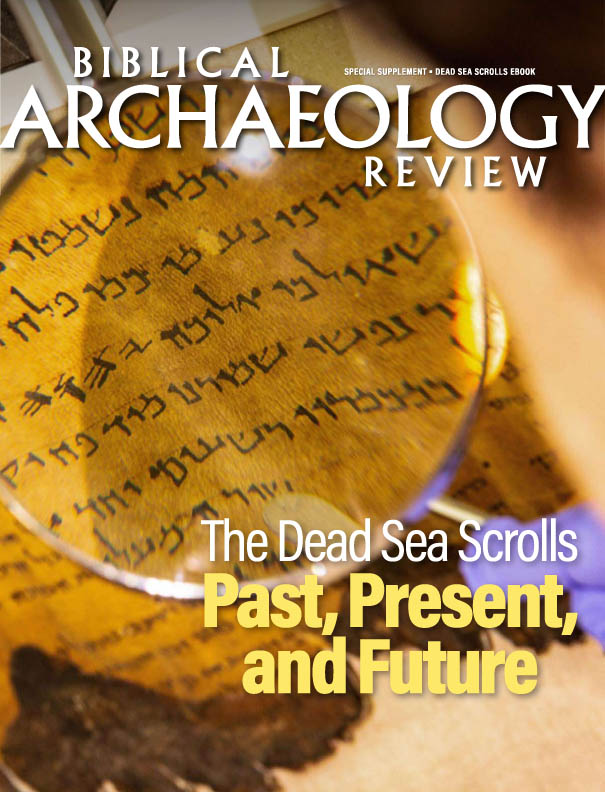
Interior of the Great Aleppo Synagogue (c. 1908). Courtesy Ernst Herzfeld, Public domain, via Wikimedia Commons.
Step into the great Aleppo Synagogue, one of the most important synagogues in the world and home to the oldest Hebrew Bible in existence, the Aleppo Codex. At least, that was how the Aleppo Synagogue would have been described before its destruction in 1947. Now an incredible virtual reality experience is bringing this lost wonder back to life.

Back to Aleppo

Courtyard of the Aleppo Synagogue, pre-1940’s. Courtesy Unknown author, Public domain, via Wikimedia Commons.
Back to Aleppo, the newest virtual reality exhibit at the Israel Museum of Jerusalem, brings visitors into the heart of this ancient synagogue as it appeared in November 1947, only a few days before its destruction. Built between the fifth and seventh centuries CE, the synagogue functioned as the center of Jewish life for the community in Aleppo, one of the oldest Jewish communities in the world. In addition to serving as the communal and religious center for the Aleppo Jews, the synagogue also housed the famous Aleppo Codex. Written in Tiberias around 930 CE, the Aleppo Codex is considered to be the most authoritative copy of the Hebrew Bible.
The virtual exhibit is crafted around a collection of photographs commissioned by Sarah Shammah, a Syrian Jewish woman raised within the Aleppo community. Having moved to Mandatory Palestine in 1932, she returned to Aleppo in 1947 with the intent to catalog the site that had been so important to her and her family. With the help of an Armenian photographer, Shammah had dozens of photos taken, recording every corner of the building. Following the UN declaration of the partition of Palestine, riots broke out within Aleppo against the Jewish community, forcing Shammah to flee the country with the photos. Meanwhile back in Aleppo, the great synagogue was burned to the ground and many of its treasures were destroyed.
Using photogrammetry to create a 3D virtual model, the exhibit provides two unique ways to experience the Aleppo Synagogue. Visitors can choose to either take a guided tour of the whole building—walking through its ancient porticos and halls—or explore it alongside Shammah as they listen to her harrowing story of preserving her own cultural heritage. Having taken the guided tour, I can personally attest to the wonder and amazement visitors will experience walking through the ancient site, seeing the Torah arks, and stepping into the very room that housed the Aleppo Codex for half a millennium. Despite the chipped paint and empty ecstatic of the synagogue in its later years, the building’s grandeur still shines through.
Back to Aleppo will be on display in the Israel Museum of Jerusalem through December 31, 2023. The exhibit joins four physical reconstructions of synagogues on permanent display, including one from Italy, one from Germany, one from India, and one from Suriname.
The Aleppo Synagogue and Codex
While Aleppo’s Jewish community stretches back to the Second Temple Period, the great synagogue was constructed between the fifth and seventh centuries CE. During the 13th century, the building was badly damaged by the Mongol invasion of Syria but was rebuilt only a few years later. With several additions added over the years, the building stood as a bastion of the community until its second destruction in 1947. After years of conflict, the Jewish community of Aleppo once again rebuilt their synagogue in 1992. However, as a result of the Syrian Civil War, the synagogue was destroyed again in 2016.

Pages of Deuteronomy in the Aleppo Codex (c. 1910). Courtesy See Aleppo Codex, Public domain, via Wikimedia Commons.
More than its fascinating history, however, by far the most famous aspect of the synagogue’s later years was its possession of the Aleppo Codex. The Codex, thought to be one of the most accurate biblical manuscripts in existence, was copied in the city of Tiberias by the scribe Shlomo Ben-Buya’a around 930 CE, with Masoretic notation provided by Aaron Ben-Asher. The codex was later moved to Jerusalem, where in 1099 CE, the Crusaders seized the codex before ransoming it, probably to Egyptian Jews, who then moved it to Fustat, Egypt. According to Jewish tradition, while in Egypt, this was the very codex used by the famous Sage Maimonides. Somehow, over the next 400 years, the scroll found its way to the city of Aleppo, possibly in the possession of a descendant of Maimonides. There, the manuscript remained in the Aleppo Synagogue for roughly 600 years.
Following the destruction of the Aleppo Synagogue, it was believed that the codex had likewise been burned. However, the Aleppo Codex would reappear in Israel in 1957, having been smuggled into Israel inside a washing machine. Although it is not certain how the codex survived the fire, one suggestion proposed in the exhibit is that the Muslim caretaker of the synagogue braved the danger of the burning building to rescue the treasure. Unfortunately, however, between the fire and the codex’s arrival in Israel, around a third of the manuscript went missing. The missing pages of the codex have garnered much attention over the years, and several pages have been discovered, yet it is still unknown how many more may still exist.
Read more in Bible History Daily:
Travelogue of the Aleppo Codex
All-Access members, read more in the BAS Library:
The Mystery of the Missing Pages of the Aleppo Codex
Not a BAS Library or All-Access Member yet? Join today.The post Step into the Aleppo Synagogue appeared first on Biblical Archaeology Society.

0 Commentaires